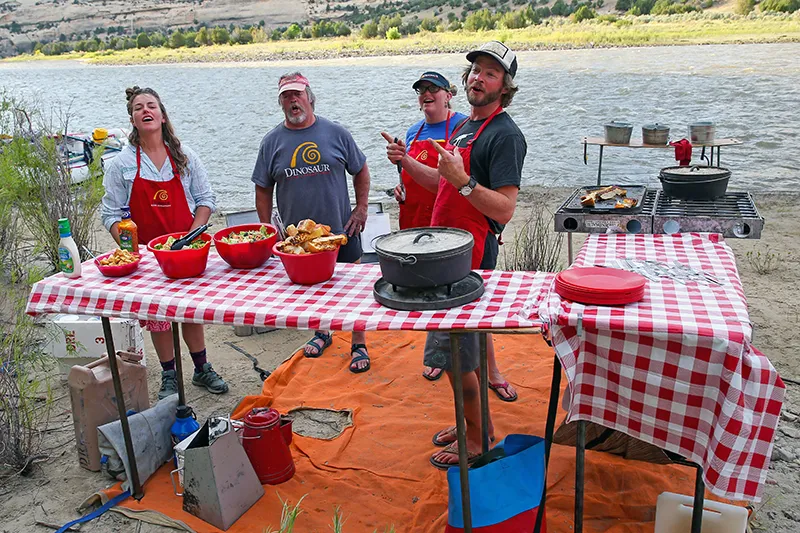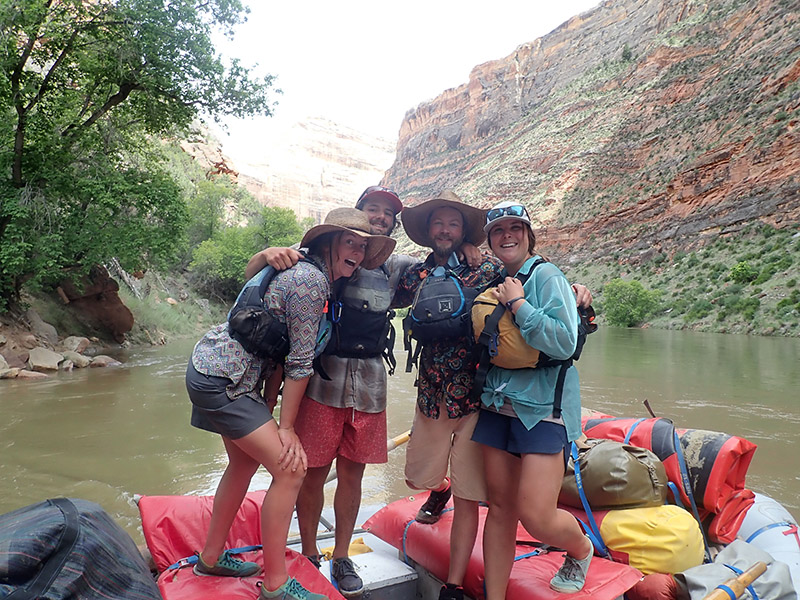Water rafting can seem like a thrilling adventure from the sidelines, but it can also be intimidating. How can you transition from bystander to first-time rafter? Some water rafting experts weighed in on tips they would share with someone going on their first rafting expedition. Keep reading to find out how they recommend you prepare and what you can expect for your first time.
Research the River and Rapids
Water rafting can be an exhilarating adventure, especially for first-timers. Here are some tips to help you prepare for a river rafting expedition and know what to expect:
● Choose the Right Rafting Trip. There are different levels of difficulty when it comes to river rafting. As a first-timer, it’s important to choose a trip suitable for beginners or those with minimal experience. Look for rafting companies that offer introductory or beginner-friendly trips, typically classified as Class I or Class II rapids. This ensures a safer and more enjoyable experience.
● Research the River and Rapids. Before embarking on your river rafting expedition, learn about the river you’ll be rafting on and the rapids you’ll encounter. Understand the classification system for rapids, ranging from Class I (easy) to Class V (extremely difficult). Knowing what to expect will help you mentally prepare and set realistic expectations for your adventure.
● Dress Appropriately. Wearing the right clothing is essential for comfort and safety. Opt for quick-drying and moisture-wicking materials, such as synthetic fabrics or neoprene, to keep you comfortable during the rafting trip. Avoid cotton as it retains moisture and can make you feel colder. Don’t forget to bring a hat, sunglasses with a strap, sunscreen, and secure footwear, such as water shoes or sandals with straps.
● Listen to Your Guide. River rafting is a team effort, and your guide will provide essential instructions and safety briefings. Pay close attention during the pre-trip briefing and follow your guide’s instructions during the rafting expedition. They will teach you paddling techniques, how to navigate obstacles, and what to do in case of an emergency. Your guide is there to ensure your safety and maximize your enjoyment.
● Be Prepared to Get Wet. Rafting involves splashes, waves, and sometimes even getting thrown into the water. Embrace the possibility of getting wet and be mentally prepared for it. Consider bringing a waterproof camera or using a waterproof case for your phone if you want to capture the experience.
● Secure Valuables and Personal Items. Leave valuable items, including jewelry and expensive electronics, behind or secure them in waterproof containers. Many rafting companies provide dry bags or boxes to store personal items, so take advantage of them. It’s also a good idea to bring a spare set of clothes to change into after the trip.
● Stay Hydrated and Energized. River rafting can be physically demanding, so it’s crucial to stay hydrated and fueled throughout the expedition. Bring plenty of water and snacks like energy bars or trail mix to keep your energy levels up. Avoid heavy meals right before rafting to prevent discomfort.
● Enjoy the Experience. Lastly, remember to have fun and enjoy the experience! River rafting offers a unique opportunity to connect with nature and bond with your fellow rafters. Embrace the thrill, appreciate the beautiful scenery, and create lasting memories.
By following these tips, you’ll be well-prepared and ready to embark on your first river rafting adventure. Stay safe, listen to your guide, and enjoy the incredible experience of navigating through the rapids!
Wear Your Life Jacket and Helmet
If you are a beginner, here is what you should know before hopping on the raft. No matter what others say, it is always best to be prepared beforehand.
● Listen to Your Guide. Listen closely to your guide and follow what they say. They know the river better than you. The guides are highly-trained, and before you head out, they are going to talk to you about the safety measures and what you should do while in the water in case of an emergency. They will tell you when and how to paddle or when to lean to one side of the raft to maintain balance. These are very important to know as sometimes the rapid in the river can be unpredictable.
● Wear Comfortable Clothes. Avoid jeans. Quick-dry t-shirts and shorts are good for a sunny rafting day. Wear either sandals with straps, sneakers, or water-resistant boots. Bring a hat with a brim to protect your face from the sun and sunglasses with a retainer strap. Apply a lot of sunscreen on your face, neck, hands, and all exposed areas. Bring an extra pair of dry clothes and shoes.
● Wear Your Life Jacket and Helmet. Once you reach the river bank, your guide will give you a life jacket and a helmet. Keep these two on while you are on the river. Check if the helmet and the jacket are secured. If you need assistance, ask the guide. The end of the paddle you hold is known as T-grip. Keep firm hands on the T-grip. No matter whether you go through a rapid or not, it is essential to hold the T-grip tightly. Otherwise, it may injure you or another rafter.
● Relax. Don’t panic, and stay calm through the rafting. Enjoy the flows, both in the river and your veins. It is a once-in-a-lifetime experience. I have been rafting for several years and came across several instances where I have seen rafters panicking when the current is high. Trust your guide. They know what they are doing, and they know how to keep you secure and rescue you in case of an unpleasant incident.
Jessica Watson
Enjoy the Journey
The following advice will assist first-timers in getting ready for a river rafting expedition:
● Select an Appropriate River: Pick a river that fits your experience level and comfort zone. To make sure you choose a river that is suitable for novices, research several rivers and their degrees of difficulty.
● Find a Reputable Rafting Outfitter: Reserve your trip with a rafting outfitter that upholds safety regulations and has knowledgeable guides and safety gear.
● Dress Appropriately: Wear synthetic or quick-drying apparel, such as swimwear. Avoid cotton since it can cause you to feel cooler, and it retains water. Wear a helmet, sunglasses, and safe shoes (sandals with straps or water shoes) to protect your feet.
● Understand Safety: Pay close attention to your guides as they give you the safety briefing. They will go over safety precautions, orders, and paddle technique. If you’re uncertain about something, ask questions. Always abide by the safety instructions that your guides give you. Recognize the hazards, and avoid taking unwarranted chances or attempting to perform tasks that are beyond your ability level.Always wear a personal flotation device (PFD) or life jacket that is correctly fitted. Make sure it is in good shape and that it is fastened securely.
● Pay Attention to Your Guide: Your knowledgeable guide will give directions at various points during the journey. Pay close attention to what they say, do as they say, and interact with your team members. Teamwork is key. To negotiate the rapids, work as a team and learn the fundamental paddle strokes. Coordination and communication are essential.
● Be Prepared to Get Wet: River rafting is an adrenaline-pumping water sport, so be prepared to get soaked. Don’t be afraid of the splashes and waves, and remember to have fun!
● Drink Up: Bring plenty of water to stay hydrated throughout the journey, and wear sunscreen. Apply sunscreen before you begin, and for further protection, think about donning a rash guard or applying waterproof sunscreen.
● Respect the Environment: Leave no trace and be mindful of your immediate surroundings. Keep the environment in mind and don’t litter.
● Enjoy the Journey: Rafting through rivers is a thrilling experience. Enjoy the rush of excitement, the breathtaking view, and the camaraderie of your fellow rafters.
In conclusion, keep in mind that river rafting can be unpredictable and physically taxing. Be ready for rapids and other types of water. Consult your rafting outfitter in advance if you have any health issues or physical restrictions. Finally, don’t forget to take pictures by utilizing a camera attachment that floats or by packing a waterproof camera.
This is a crowdsourced article. Contributors’ statements do not necessarily reflect the opinion of this website, other people, businesses, or other contributors.




